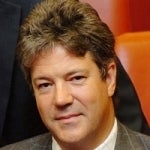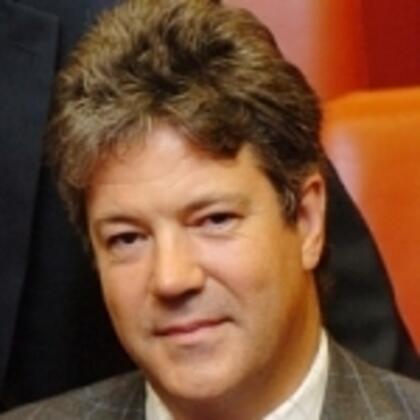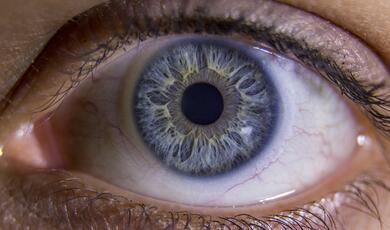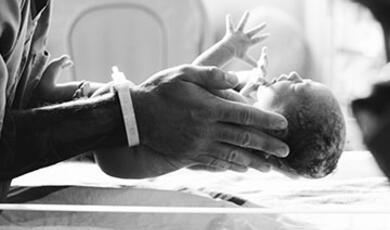Braille and the history of blindness
Share
- Details
- Text
- Audio
- Downloads
- Extra Reading
This year is the 200th anniversary of the birth of Louis Braille. He became blind soon after an accidental injury aged three and despite the odds went on to develop a tactile system of reading that has become famous throughout the world. This lecture will explore the cultural history of blindness and the story of Braille. The role of modern organisations dealing with helping the blind and visually impaired will be described.
Download Text
Braille and the history of blindness
Will Ayliffe
2009
Blindness in ancient times was associated with poetry, musicians and intelligence. Many myths contain heroic stories of blind people overcoming adversity to triumph at the end.
Homer the famous blind muse of pre-history may well have been based on a real person. Certainly in Egypt we see images of blind musicians. The association of musicians with blindness continues to this day. The skill of memory, developed to an astonishing degree by many blind people, was undoubtedly helpful in pre-literate societies to hand down stories and music unaltered.
However at the other end of society blindness then and now came at a price that of poverty, alleviated by begging and an early death, as is still the case in developing economies.
Jacques-Louis David: Bélisaire demandant l'aumone - Belisarius asking for alms 1781Musée des Beaux-Arts, Lille
In the later medieval period attitudes began to change with blindness being considered a punishment for some sin. The role of Jesus in curing the blind was famous and frequently illustrated. However the prejudice of society and the church condemned many to poverty. Specialised hospices for the blind were known in the Byzantine Empire and were set up in Western Europe at the time of the Crusades. Quinze-Vingts, Paris 1260; Elsing-Spital, London 1329, being celebrated examples. Whilst these institutions provided shelter and spiritual comfort, they were not set up to encourage education. Indeed the inmates of Paris were described as uniformed beggars.
Upon observing one of the humiliating spectacles put on by a troupe of these inmates, Valentin Haüy, polymath linguist and humanitarian, decided to set up a school for education of the blind. Obtaining help from influential backers and practical advice from the famous blind musician, Maria von Paradis he began the first school for educating the blind. His first pupil taught at home was the 17-year-old beggar Francois Lesueur. Demonstrating his successful methods led to expansion and the school was moved to No. 18, rue de Notre Dame des Victoires in February 1786.
Known as l'Institut des Jeunes Aveugles, the school became the prototype for schools throughout the world.
Haüy's embossed type was used to teach the children to read by touch. It was complicated and full fluency was rare, most of the students allegedly learning the texts by rote. Following the turmoil of the revolution, Haüy was deposed and went to set up a school in Russia. The remaining children were removed to the ancient Quinze-Vingts now located in the decrepit former barracks of the Black musketeers.
A strict new supervisor was appointed, the ophthalmologist Sebastien Guille, who moved the institute to another mouldering old building, the former seminary of St. Fermin. It was here, in February 1819 that the blind 10 year old Louis Braille was admitted. Surviving the strict regime he excelled and became promoted by the benign new director, Andre Pignier, to teacher. Coming into contact with a punctate code developed by Captain Barbier for the military, Braille realised the potential and developed the braille system. Dissemination was slow, inhibited by the sighted principals of blind schools who favoured some sort of embossed typeface. Eventually Braille gained the upper hand and was used to spread literacy and education across the world.
Two hundred years after his death we celebrate the brilliant but modest inventor of this important code. As Helen Keller stated
"We the blind are as indebted to Louis Braille as mankind is to Gutenberg . . . Without a dot system what a chaotic, inadequate affair our education would be!"- Helen Keller
Further reading and sources:
GUY, A KNIGHT, TO B. OF CHARTRES. Rolls Series, M. Paris. Chron. maj. VI, pp 155 ff. Latin. www.fordham.edu
Helen Keller: a life By Dorothy Herrmann
American Foundationfor the Blind
How Braille Began-by Paula Kimbrough: The Braille Monitor 2005
The blind in British society: charity, state, and community, c. 1780-1930 By Gordon Ashton Phillips
Disabled world.
Braille monitor: Paula Kimbrough. www.brailler.com
perkins home page
Out of Darkness: The Story of Louis Braille. Russell Freedman 1999.
Part of:
This event was on Wed, 21 Oct 2009
Support Gresham
Gresham College has offered an outstanding education to the public free of charge for over 400 years. Today, Gresham College plays an important role in fostering a love of learning and a greater understanding of ourselves and the world around us. Your donation will help to widen our reach and to broaden our audience, allowing more people to benefit from a high-quality education from some of the brightest minds.


 Login
Login







